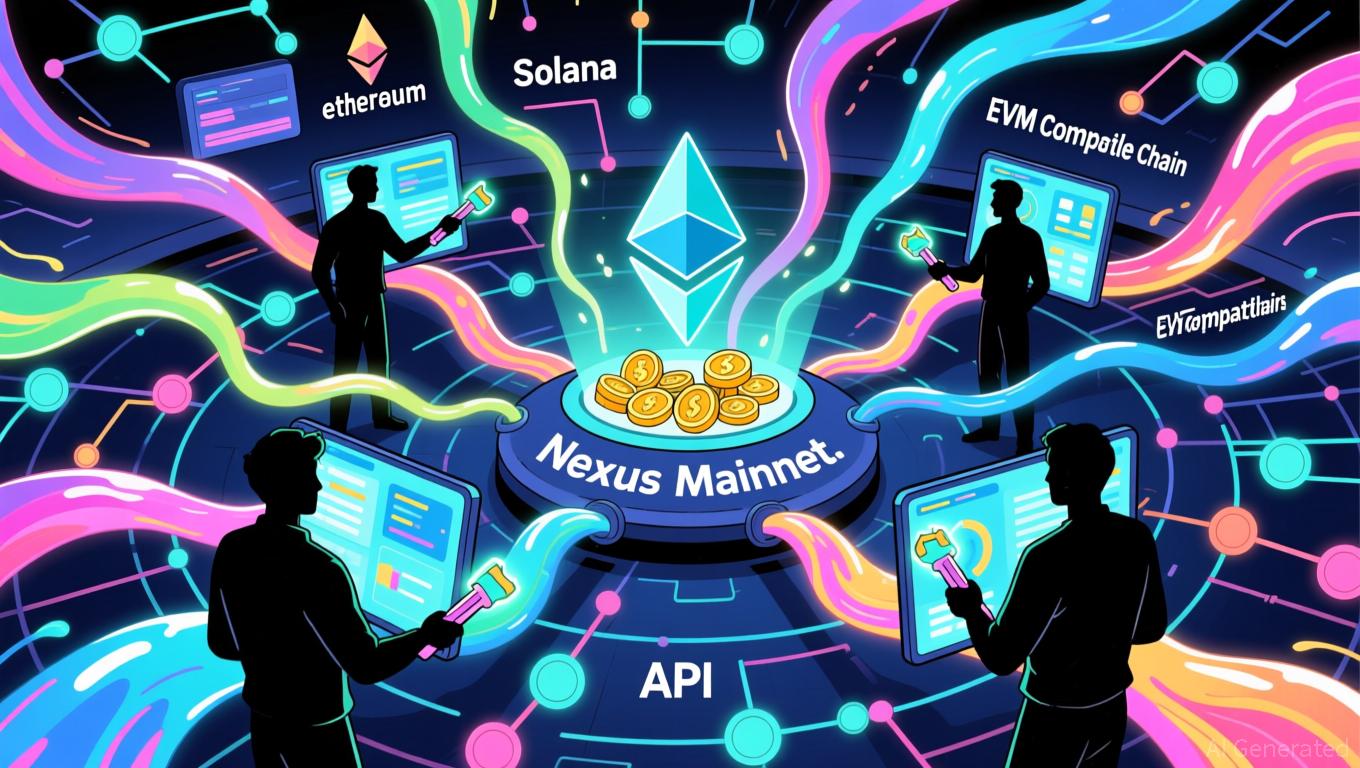AI and Interest Rate Reductions Propel JPMorgan's 8,000 S&P Projection for 2026
- JPMorgan forecasts S&P 500 hitting 8,000 by 2026 driven by AI growth, Fed rate cuts, and corporate buybacks. - Elevated market multiples justified by AI-driven earnings and fiscal policy, but oil price risks and policy shocks pose challenges. - Crypto markets may benefit from risk-on environment, though regulatory delays and liquidity risks persist amid K-shaped economic divergence.
JPMorgan Predicts S&P 500 Could Reach 8,000 by 2026
JPMorgan Chase & Co. has released one of its most optimistic outlooks in recent years, projecting that the S&P 500 index may climb to 8,000 by 2026. This forecast is underpinned by anticipated earnings growth fueled by artificial intelligence, ongoing interest rate reductions from the Federal Reserve, and a strong wave of corporate share buybacks, as highlighted in recent market research.
The bank’s equity strategists, led by Dubravko Lakos-Bujas, believe that the current high market valuations are warranted due to robust corporate profits and a surge in capital spending related to AI advancements. This bullish perspective is echoed by other major financial institutions, including Deutsche Bank and Morgan Stanley, which have also set ambitious targets for the index, according to industry reports.
Key Drivers Behind the Forecast
- Federal Reserve Policy: The trajectory of the S&P 500 will largely depend on how quickly the Fed continues to ease monetary policy and whether AI-driven productivity gains can be sustained.
- Interest Rate Cuts: JPMorgan anticipates that the central bank could implement two more rate cuts in 2026, making borrowing cheaper and encouraging further business investment.
- AI-Related Growth: Sectors such as data centers and semiconductors are expected to benefit most from AI, potentially driving earnings above current projections, based on recent analyses.
Lakos-Bujas noted that high market multiples are factoring in not only strong earnings growth and an AI investment boom but also more accommodative fiscal policies, referencing legislative initiatives like the "One Big Beautiful Bill Act."
Implications for Cryptocurrencies
While JPMorgan’s outlook centers on equities, the broader economic backdrop could also support digital assets like Bitcoin. Wall Street strategist Tom Lee has cautioned that 2026 could bring significant volatility, with the S&P 500 at risk of a 20% correction due to policy changes or geopolitical events. Nevertheless, he pointed out Bitcoin’s resilience, suggesting it could exceed $100,000 by the end of 2026 if risk appetite returns, as some forecasts indicate.
Recent trends in the crypto market, including a 12% rally in November, suggest that investors are beginning to anticipate a recovery. However, ongoing regulatory uncertainty and liquidity concerns remain challenges, according to the latest market data.
Structural Shifts and Regulatory Challenges
JPMorgan’s ambitious target also signals a fundamental change in market dynamics. The bank highlights that the S&P 500’s performance is increasingly linked to a "K-shaped" economic recovery, where wealthier households and industries focused on AI are outpacing more traditional sectors. This divergence may encourage greater institutional interest in innovative assets like cryptocurrencies. However, regulatory developments—such as Switzerland’s decision to postpone the adoption of global crypto tax information-sharing rules until 2027—could pose obstacles, especially for international transactions, as noted in recent industry updates.
Risks on the Road to 8,000
- Energy Market Imbalances: JPMorgan warns that if oil production cuts are not implemented, Brent crude prices could fall into the $30 range, potentially slowing economic growth and sparking a bear market.
- Monetary Policy Challenges: The Federal Reserve’s ability to balance rate reductions with inflation management will be crucial. Currently, markets are factoring in an 83% chance of a rate cut in December, reflecting strong confidence in the Fed’s approach, according to recent forecasts.
Disclaimer: The content of this article solely reflects the author's opinion and does not represent the platform in any capacity. This article is not intended to serve as a reference for making investment decisions.
You may also like
Avail's Intent-Driven Nexus Addresses the Issue of Fragmented Liquidity Across Chains
- Avail launches Nexus Mainnet, a cross-chain solution unifying liquidity across Ethereum , Solana , and EVM networks. - The intent-solver model enables seamless asset transfers without technical complexities, streamlining user experiences. - Developers gain modular tools for multichain integration, reducing costs as cross-chain liquidity demand grows. - Nexus abstracts execution layers, offering unified balances and execution while addressing fragmentation challenges. - With $50B+ in cross-chain activity

From Guesswork to Practical Answers: Remittix's Wallet Highlights Crypto's Move Toward Real-World Use
- Remittix launched an App Store wallet, enhancing crypto accessibility with a user-friendly interface and cross-platform development plans. - The wallet's crypto-to-fiat module and CertiK/KYC verification aim to bridge digital assets with traditional finance, boosting investor confidence. - A $250,000 giveaway and 15% referral rewards drive community engagement, positioning Remittix as a utility-focused competitor in a consolidating market. - Analysts highlight its alignment with crypto's shift toward rea

Blockchain Faces a Quantum Countdown: Will Networks Adapt in Time?
- Major layer-1 blockchains prioritize quantum-resistant upgrades as NIST finalizes post-quantum (PQ) standards, addressing long-term risks from quantum computing advancements. - Networks like Algorand deploy lattice-based signatures (e.g., FALCON), while Cardano and Ethereum test hybrid solutions to protect ECDSA-based infrastructure from future quantum decryption threats. - Migration challenges include larger key sizes, complex key management, and incentivizing users to rekey dormant accounts, complicati
XRP News Today: XRP ETFs Attract Unprecedented Investments, But Price Remains Stuck Under Key Resistance
- XRP ETFs attracted $628M in inflows but token price remains below $2.22 resistance despite regulatory progress. - Solana ETFs saw $156M outflows vs XRP's $89M inflows due to technical issues and higher perceived risk. - Analysts highlight ETFs' role in liquidity but stress macroeconomic factors and technical barriers limit price breakthroughs. - XRP's 60-day range ($1.85-$2.15) contrasts with $3 price targets requiring sustained ETF demand and rate cut optimism.
